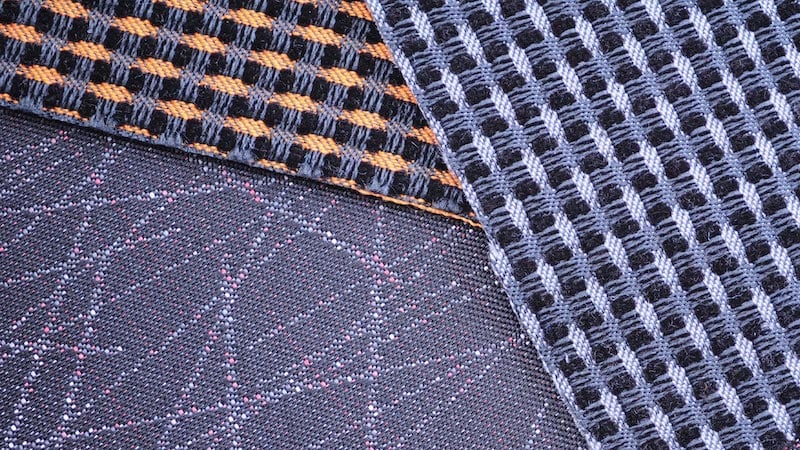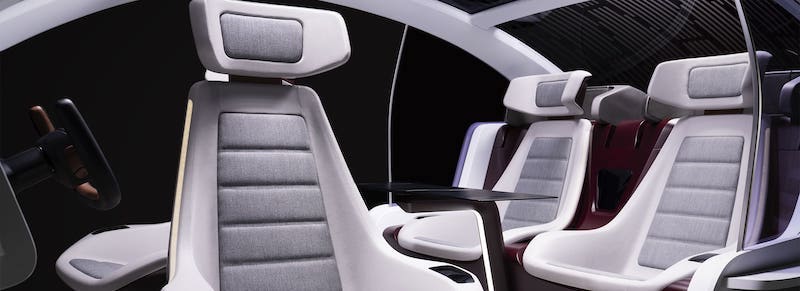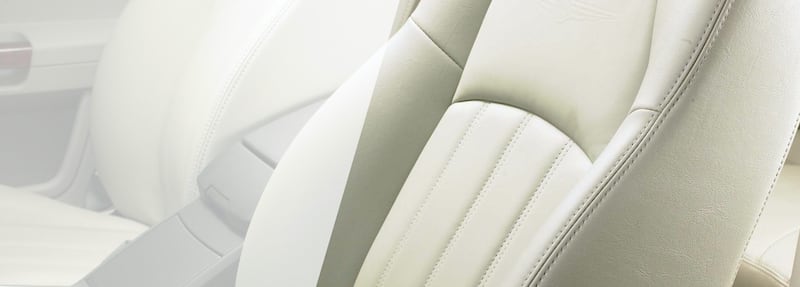Suppliers of technical textiles and related materials to the global automotive industry can expect major disruption in the coming years, according to a report in the latest issue of Technical Textile Markets from the global business information company Textiles Intelligence.
Such disruption will be due to two significant developments: recent initiatives which could result in the end of vehicles powered by internal combustion engines and their replacement with hybrid vehicles and electric vehicles (EVs); and advances in autonomous or self-drive vehicles
There is likely to be a significant increase in the number of EVs manufactured globally in the coming years as vehicle manufacturers ramp up production in accordance with commitments they have made, and in response to various multinational initiatives and government bans on the sale of petrol and diesel vehicles by 2040.
Multinational initiatives include the Clean Energy Ministerial’s (CEM’s) EV 30@30 campaign, which aims to increase the deployment of EVs so that they account for at least 30% of all new vehicles sold by 2030.
For many companies which supply textiles to the automotive industry, the move to EVs will be a positive development. One consequence will be an increase in the importance of the aesthetics of a vehicle’s interior as software starts to take over many of the functions previously performed by the driver.
There will also be strong growth in demand for nonwoven components which are employed as separators in batteries and in fuel cells for electric vehicles, and for materials which reduce noise and maintain thermal comfort.
On the downside, however, there will be a significant fall in the use of many of the advanced hybrid filter media materials which have been developed specifically in recent years to deal with engine emissions. Eventually, the need for such materials will be eliminated.
The introduction of self-drive vehicles will bring another set of challenges and opportunities. For example, the pioneers of such vehicles envisage the rise of self-driving fleets and the eventual elimination of car ownership. If this vision comes to fruition, there will be a requirement for interior fabrics which are more hard-wearing and more durable and have easy-clean and antimicrobial properties. In addition, interiors will have to be refurbished much more frequently than cars which have only a single owner, have limited numbers of passengers, and are parked on streets and in garages for extended periods of time.

TEXTILES APPLICATIONS IN AUTOMOTIVE INDUSTRY
With the rising degree of vehicle production and its corresponding global stocks primarily based on the rapid industrialisation in Asia, Africa and Latin America plus the rising call for in Eastern Europe, the proportion of textiles in a motor vehicle is growing in response to more stringent consolation and safety needs in industrialised countries like the USA, Japan and Western Europe.
Automobile textiles, that are nongarb textiles, are extensively utilized in automobiles like motors, trains, buses, plane, and marine vehicles. Hence, the time period automobile textile manner all type of textile components e.G. Fibers, filaments, yarns and the fabric used in vehicles.
It is projected that almost forty-five square meters of textile fabric are utilized in an automobile for indoors trim (seating area, headlines, facet panel, carpet, and trunk). According to a survey, the proportion of fabric in a motor car quantities to two according to cent of the overall weight of a car.
Apart from this, seen fabric additives, casting off hidden components which include in tires and composites, hoses and filters; amount to ten-11 kg in step with the vehicle in absolute phrases. Industrial textiles are in large part utilized in automobiles and structures which includes vehicles, buses, trains, air crafts, and marine vehicles. In car fabric enterprise, four forms of fabrics are used, specifically:
The airbag and seat belts used as protection measures are one of the ultra-modern varieties of textiles in cars and feature a capability marketplace for technical textiles that has a massive scope for increase and improvement. Because of presidency rules and customer hobby, the applications have been extremely successful during the last ten to fifteen years.
In the last decade, airbags or inflatable restraints have obtained noteworthy importance as a guard for the driving force and the passengers in case of an accident. Initially, the baggage had been made for a head-on collision, however now, there are numerous other protection devices like facet effect bags, knee bolsters, side curtain, etc, available for safety in any kind of crash.
Because frontal collisions are the main purpose of unintended deaths, airbags are being supplied as a general product in vehicles through regulation, which has given the fast increment of airbags commercial enterprise inside the ultimate decade.
NHTSA and HHS document that airbag systems have performed an important function in saving heaps of lives on account that 1985. In 2002 on my own, because of the airbag gadget, a 20 in step with cent discount in fatalities as a result of deadly collisions has been determined.
In 1999, there have been 55 million motors with eighty-one million airbags. In 2004, the range of frontal airbag units became almost a hundred million and the number of side-impact airbags nearly 65 million. In the equal yr, almost 23 in step with a cent of the new motors in North America had facet airbags for chest protection and 17 percent had facet airbags for head protection. By 2005, this has multiplied to one hundred eighty million airbags and 65 million vehicles.
The international airbag market is envisioned to rise from 66 million devices in 1996 to over two hundred million gadgets in 2006, a compound annual growth charge of 12 percent. Over this decade, Europe will put in 60 million units, Asia-Pacific 30 million units, and North America 24 million devices.
While North American and Western European markets are growing, sizable improvement is also seen inside the global market. As new applications are developing for airbags, which include rear seat bags, inflatable seat belts and an outdoor airbag machine for pedestrians, new fabric and combinations are being applied. The front and passenger baggage have distinct requirements because of the distance from the occupant, but they both have fast increment and deflation in a complete short time span.
Rollover baggage needs to stay inflated for five seconds. In addition to new makes use of, expected tendencies include lighter fabric to be used with more recent “cold inflators,” mixed with substances like fabric and film, new coating polymers (Silicone now dominates having replaced neoprene).
Airbags had been first added inside the past due Nineteen Sixties, but it’s far handiest within the 1990s that their use expanded amazingly and it’s miles set to develop in addition. This validates the studies and improvement still being made on design, deployment and base fabric.
The possibilities for the fabric and making-up indus¬attempts are large in the location of airbag manufacturing. This is due to its large requirement particularly in view of the law, which is already imposed through many countries.
Around 1.42 meter2 of material is needed to provide driving force¬ facet airbags on light vans. This estimation offers the idea that the airbag marketplace is of terrific importance for the use of technical textiles. Airbags are typically made through covered or uncoated fabrics of PA 6.6 yarns with lesser air permeability.
A cloth cushion is included as part of the textile element for an airbag, which is folded into the middle of the steerage wheel (for the driver) or within the glove compartment (for the front seat passenger). Generally, the bag is woven via nylon 6, 6 filament yarns, which might be in demand in huge portions due to their excessive energy-to-weight ratio, favorable elongation, good enough thermal residences and a comparatively low fee of production. Other properties required are high tear power, excessive anti-seam slippage, managed air permeability and be successful for being folded into constrained locations for over ten years without deterioration.
Function
A triggering tool sets-off explosive chemical substances while it senses a twist of fate above 35 km/h is about to occur. These chemical substances maintain again and cushion the automobile occupant from a collision with tougher objects. The cloth from which the bag is made need to be capable of withstanding the power of the propellant chemicals. Moreover, the recent gases must no longer penetrate the material and burn the skin of the auto occupant.
For airbags to perform their shielding feature, every function in the machine has to work with reliability and predictability. In frontal airbag initiation, the cushion begins to deploy within 20 ms after the collision and is complete installation in 50 ms. Within this era of time, the bag has to unfold through the plastic cover, blown up and fill the distance between the dashboard and occupant.























